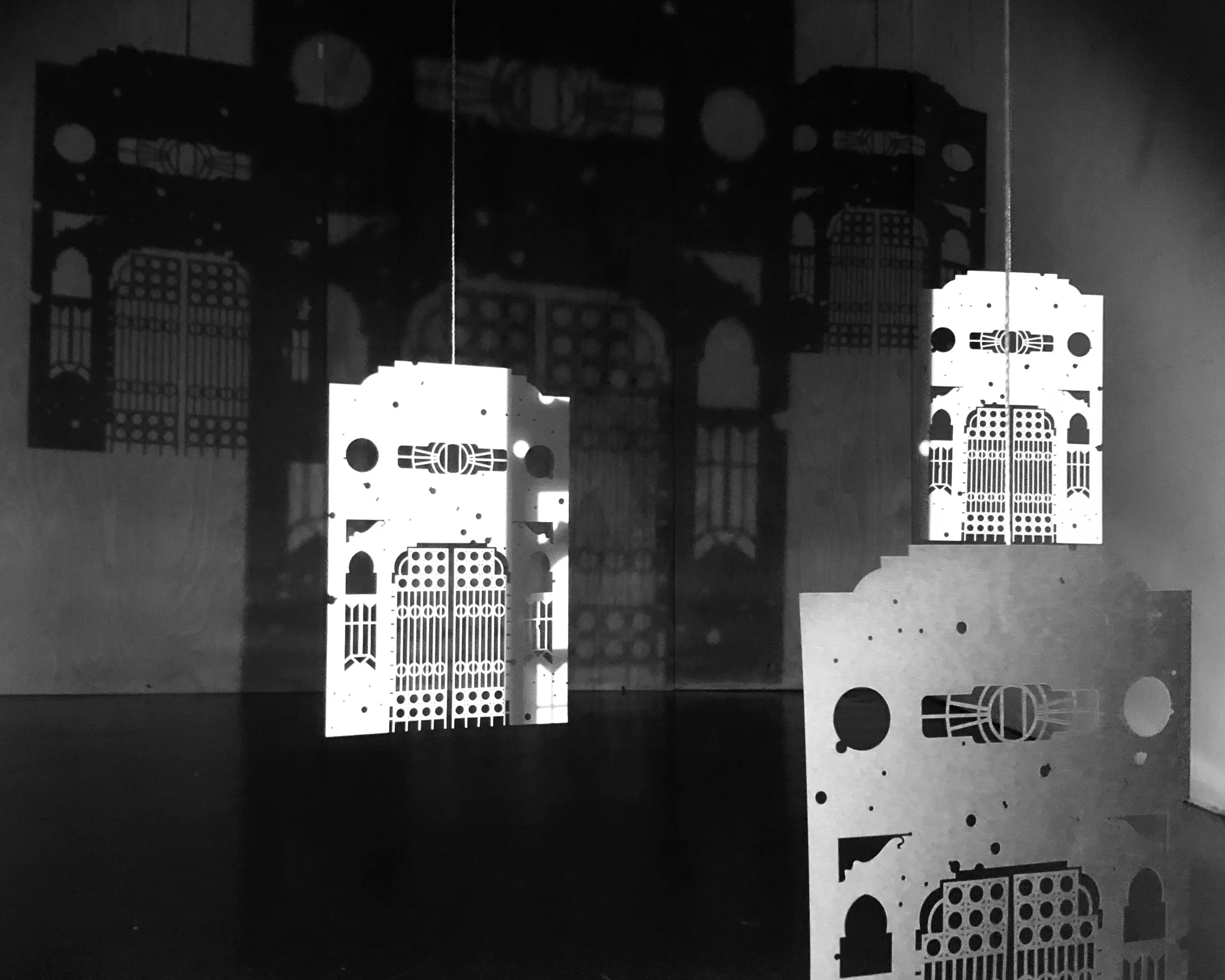THE BUILDINGS OF BEIRUT AND THE GHOSTS THAT HAUNT THEM
AN EXPLORATION OF DESTRUCTION
AND CULTURE IN THE CITY’S ARCHITECTURE
In my senior year at the University of Pennsylvania, I wrote an honors thesis in Architecture. This allowed me to combine my passion for Art, Architecture and creative writing culminating in a ‘love letter’ project about my city Beirut, its history and its built environment.
ABSTRACT
The civil war in Lebanon has ravaged the built fabric of Beirut both in their physical appearance but also in their spirit. The city’s buildings are thus a means of healing, because despite the citizens unwillingness to rehash history in fear of starting up the conflicts once again, the monuments have continuously told the stories of the war. These famous structures have become a way for the people of Lebanon to deal with their memories of the 15-year conflict, as well as the nostalgia they feel for the city that Beirut used to be before 1975.
A building, although it is an inanimate object, has a life. Like the humans that inhabit it, its purpose, its form, its beauty constantly evolve and the building is shaped by the events that punctuate its lifespan. This thesis explores the effects of the Lebanese civil war on Beirut’s architecture. But it will also probe architecture’s own agency in changing cultures, lives, and communities.
In this photograph essay I fragment my narration by interspersing prose and poetry, image and text. I switch between personal or family accounts, interviews, participant observation, and autobiographical narratives to capture both the culture and the physicality of Beirut. These buildings are divided into two main fractions and five subsections. The first faction entitled the Destruction includes the Dead and the Lost whereas, the Afterlife includes the Found, the Revived and the Remembered. The Dead buildings, are the structures that have been demolished and only live on through the collective memories of the war survivors. They are also the newly built buildings that have no connection to the culture of Lebanon in any way. The Lost buildings, are the ones that previously to the war, were social and lively spaces that have since been completely abandoned, and stripped from the people that once inhabited them. Because these Lost buildings are still physically present in Beirut’s skyline, there is still a possibility for the people to ‘find’ them and take control of them once again. Those are the third type of buildings, The Found. The Revived buildings, are the ones that today, find purpose in telling the stories of the city, of the people and of the war. Lastly, the Remembered are the new buildings of Beirut, that were inspired by the war in the way they perform and in the way they were designed.
PREFACE
As I walked through the hallowed halls of the Holiday Inn, I felt my heart beating in my throat...
It seemed crazy to me that I was finally seeing the inside of a building whose facades were so familiar to me, views that I unconsciously looked at, day and night from my garden, my bedroom, on my way back home and as I was leaving the house to go out. Right next door to me, the Holiday Inn was the most infamous Lebanese war icon, yet it bore no resemblance to the hotel chain, or any other hotel in the world in its desolate state.
I walked, slowly, mindful not to step on any of the dusty papers left lying on the ground; old newspaper clippings, washed out photos and even a few bullet casings and some shrapnel. I had not meant to stray from the group. I heard the faint voices ahead. But the whooshing of the wind rang loudly in my ears, haunting me, pulling me further into the darkness of the rubble.
The missing furniture did not reassure me. It emphasized the emptiness that replaced what once was. The writing on the walls, an epitaph for the deceased, betrayed that desolation, revealing to me the stories of the building’s residents: snippers, guerrillas, prisoners… not the happy hotel guests one would imagine would stay at the Holiday Inn.
I reached into the pile of papers beneath me, rummaging through it. A letter. “Habibati Maya,” it said, “how I miss you dear sister.” I choked thinking of the separated families left hopeless from the war. I looked up to the ceiling grateful for the new beams that had been put in. It’s a miracle the roof hadn’t collapsed.
As I walked, deeper into the darkness, I ran my fingers through the gun holes left on the walls, catching glimpses of the world outside. I stopped. Dead end. Taking a closer look. I rested my hands flat on the wall and peeped through a small rectangular aperture.
It hit me.
My heart sank...
I now stood where a killer once did.
Between the Civil war (1975-1990), the Israeli bombardments of 1982 and 2006 and the events of 2008, Lebanon had gone through many long years of bloody conflict. War became something that was passed on from one generation to the next and something that every Lebanese not only knew and understood but something that they carried along with them. More than anything, the wars in Lebanon shaped the built fabric of Beirut. It became engraved in the city’s identity. Indeed, war lined the city’s streets, it is traced on its walls, and it is even blasted in its sounds.
Coming into the 1990s and out of the war, Lebanon’s buildings were scarred and still bear these scars to this day. A lot of these buildings, I drive or walk by, and encounter daily. They have become monuments that hide in plain sight but that are still very much a part of the city’s identity. I still remember discovering every one of those famous buildings growing up, but one in particular always comes back to me.








